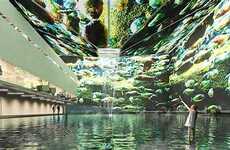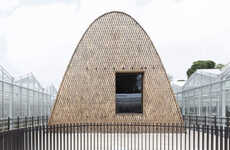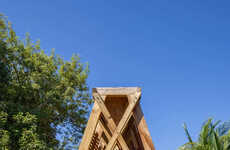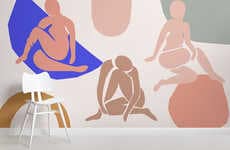
WOHA Debuts an Immersive and Futuristic Pavilion
As the demand for producing sustainability-focused projects is quite strong, many architects and designers dabble in the art of the self-sufficient structure. The latest instance of this is put forward by WOHA who is exhibiting in the 2020 Dubai Expo. The firm looked to vegetation to create a pavilion that "reflect Singapore's determination to alleviate global warming and become one of the greenest places in the world."
The self-sufficient structure is lush on plants and trees, facilitating a tranquil sanctuary of sorts that offers refuge from the ever-demanding work environment to individuals. With this project, WOHA attempts to show the possibility of realizing "a self-sufficient green oasis anywhere in the world, even in the desert."
The pavilion peeks, following a series of pathways, and at the top, WOHA has inserted three 'Garden Cones.'
The self-sufficient structure is lush on plants and trees, facilitating a tranquil sanctuary of sorts that offers refuge from the ever-demanding work environment to individuals. With this project, WOHA attempts to show the possibility of realizing "a self-sufficient green oasis anywhere in the world, even in the desert."
The pavilion peeks, following a series of pathways, and at the top, WOHA has inserted three 'Garden Cones.'
Trend Themes
1. Self-sufficient Structures - The trend of designing self-sufficient structures using vegetation and green technology is rapidly developing, presenting opportunities for architects to create structures that reflect sustainability and environmental consciousness.
2. Green Technology - The increasing emphasis on sustainability is leading to a rise in the use of green technology in architecture, creating opportunities to develop new and innovative green technologies.
3. Biophilic Architecture - A trend towards using nature, natural light, and other natural elements to improve the well-being of individuals in built environments is driving the growth of biophilic architecture, creating opportunities for architects to incorporate natural elements like vegetation into their designs.
Industry Implications
1. Architecture - The trend of self-sufficient structures and biophilic design present opportunities for architects to incorporate more sustainable practices in their designs.
2. Construction - The trend towards green technology and sustainable building practices like the use of plant coverings present opportunities for the construction industry to implement more sustainable practices.
3. Sustainability - The growing trend towards sustainability-focused projects like self-sufficient structures and biophilic architecture is creating opportunities for businesses to develop and implement sustainable practices.
6.5
Score
Popularity
Activity
Freshness























